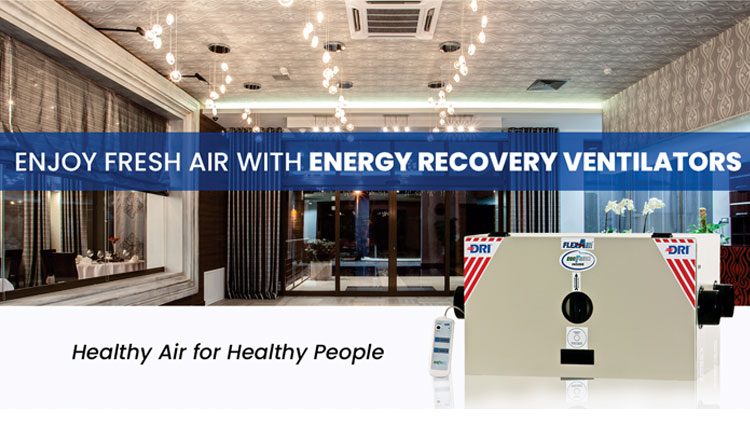Energy recovery ventilators providing energy-efficient solutions for improving IAQ
Article by - Rahul Aeron, AVP, DRI -Desiccant Rotors International
The rapid rate of urbanization has given rise to the issue of air pollution. Efforts are being made at the global level to tackle the issue wreaking havoc on the environment. Looking at the magnitude of the outdoor air pollution people fail to recognize the indoor air pollution existing in their close proximity. But the indoor air pollution is as detrimental as outdoor air pollution and at times can even exceed the degree of damage incurred on the individual as it is unable to find an escape from the enclosed space.
Moreover, the present age building structures with tight designs for restricting infiltering the air inside is further compounding to the problem by leaving no space for ventilation. Presence of indoor air pollutants like formaldehydes, asbestos, VOCs dust, pollen, dirt, pet dander, biological growth, and excess humidity within the enclosed space,invariably deteriorates the Indoor Air Quality (IAQ) making it 2-3 times more polluted than the outdoor air. The vulnerability of the occupants increases substantially as poor IAQ leads to serious short-term and long-term health effects that may not show immediate signs but remain present as an underlying ailment in a subtle way. While breathing issues, lethargy, and pain in the eye, are some of the common and direct consequences of poor ventilation, there has been an emergence of a phenomenon called ‘Sick Building Syndrome’ that impacts the overall health and well-being of the person. People with pre-existing allergies and asthma conditions are the worst affected.
The intensity of the problem magnifies in large commercial and industrial spaces which have complex, packed structures leaving no scope for influx or outflux of air and generally are huddled with a large number of people. While the poor IAQ can negatively impact health, in places like offices, schools, and other workplaces, the uncomfortable conditions can immensely meddle with the concentration power of the individual and lead to reduced productivity of the occupants within the building.
The menace of poor IAQ can be curtailed by introducing clean fresh air from outside to the building. Energy Recovery Ventilation (ERV) is the most viable solution for improving the IAQ by ensuring the continuous circulation of cool fresh air. The ERV is balanced mechanical ventilation that preconditions the fresh air coming inside by recovering energy from the outgoing stale air to match the indoor temperature. ERV is highly efficient at getting rid of the stale air inside the building and replacing it with fresh air from outside. It is a versatile technology that is not just limited to the exchange of dry heat but goes a step further and removes the moisture from the space as well. Adding to the list of advantages, it is well adept at minimizing the energy loss where the heat exchangers transfer moisture and heat from outgoing stale / exhaust air to incoming fresh air through out the year.
Therefore, energy recovery ventilation is the way ahead for smart buildings which have value for energy saving. It functions smoothly without interfering with the operating capacity of the HVAC systems but contributes immensely to enhancing its efficiency. This is the most sustainable solution for achieving comfortable conditions within a building in the most environmental-friendly way.
To watch a brief video on Energy Recovery Ventilators, click https://www.youtube.com/watch?v=eE6uzVuft38
Article by –

AVP, DRI -Desiccant Rotors International



